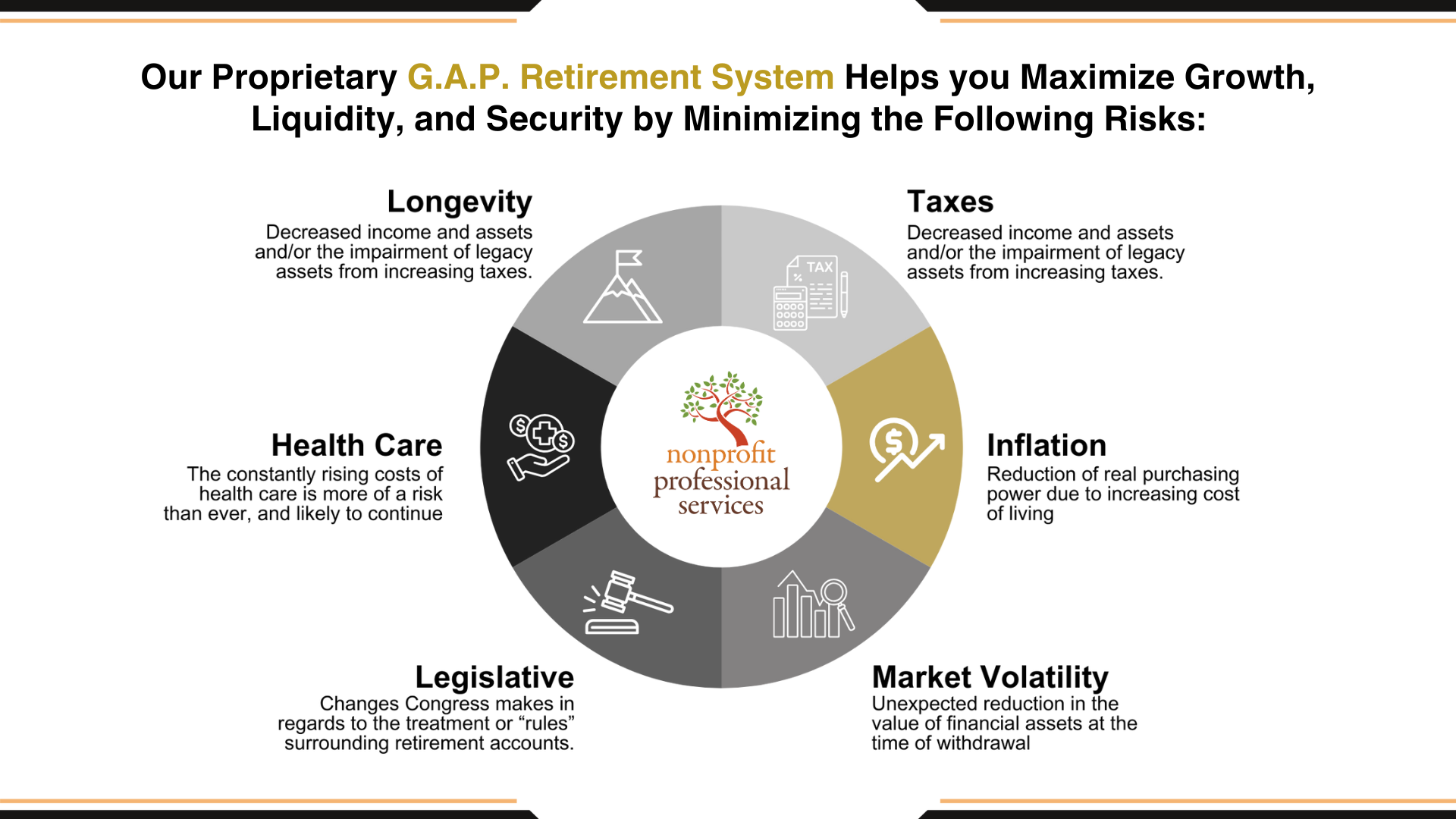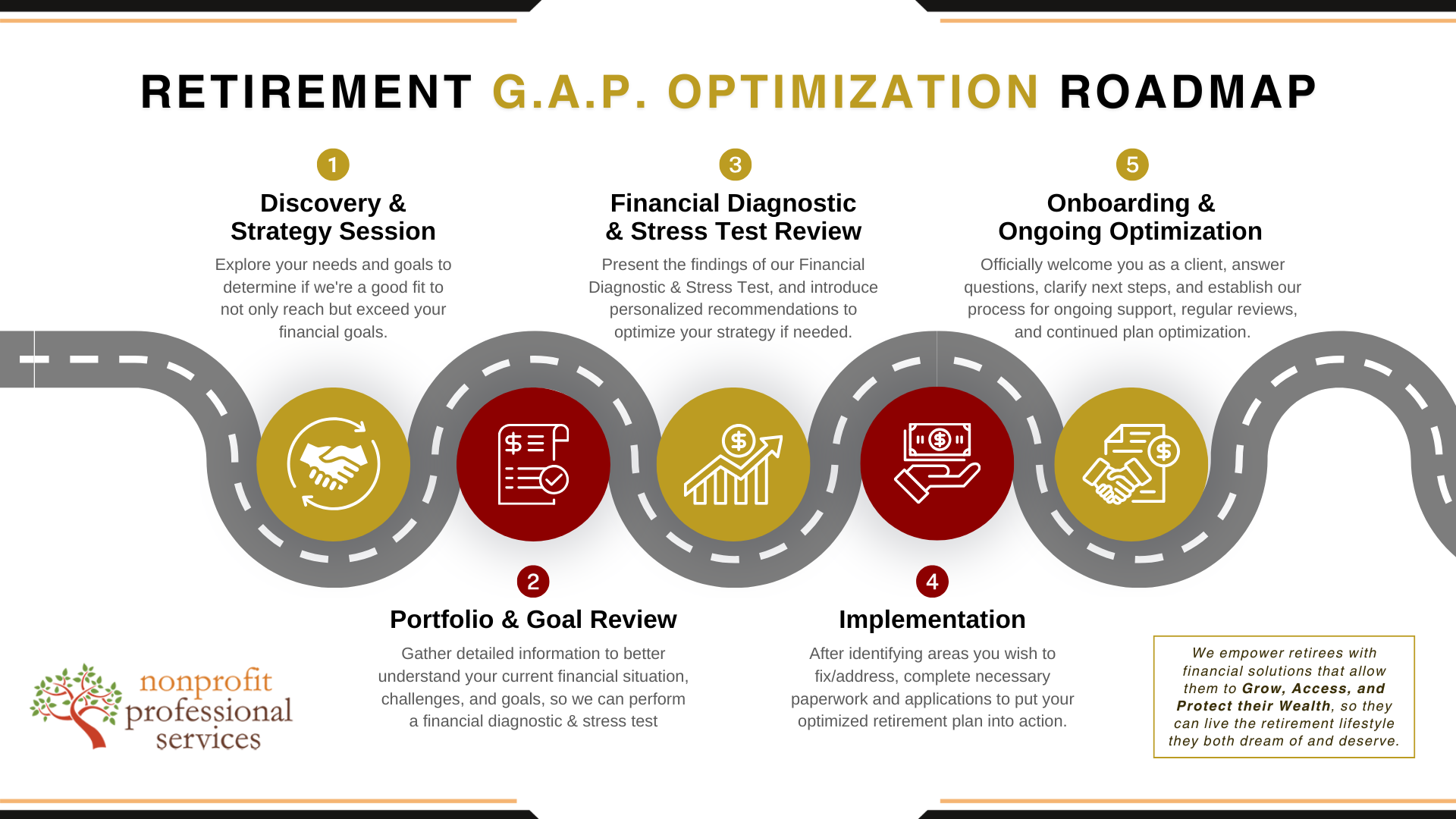Rethink Your Retirement Strategy
At Nonprofit Professional Services, we challenge the norm. We start with the end in mind. While most retirement advisors assist with designing investment portfolios with the right balance of mutual funds, we start with assessing the risks that can derail the best retirement savings plan.
Who we are
Retirement Planning Simplified: Expertise Meets Efficiency
With decades of experience spanning both business and nonprofit sectors, I bring a unique, streamlined approach to retirement and tax planning. Having served thousands of clients and led numerous boards, I understand the complex financial landscapes of today's professionals.
My mission is to provide strategic, personalized financial guidance that cuts through bureaucratic delays and delivers results. From nonprofit executives to high-net-worth individuals, I offer tailored solutions designed to maximize your financial potential and secure your future.
Key Differentiators:
- Proven Systems: Efficient, data-driven planning processes
- Dual-Sector Expertise: Deep insights from business and nonprofit worlds
- Personalized Approach: Custom strategies that align with your unique goals
Let's transform your retirement planning with precision, speed, and strategic thinking.
What We Do
.jpg?width=1775&height=2000&name=joel-jasmin-forestbird-znoL1m6MD_k-unsplash%20(1).jpg)
We review and analyze the five financial risks people face in Retirement.
We analyze each one: taxes, inflation, market volatility, longevity, and the cost of health care..
We prioritize each of the risks, then work with you and your financial advisors to develop a plan to address the risks of concern.
Each risk can be assumed, shared, or transferred, and we consider each one through that lens.
We use creative concepts to maximize how we design plans that other retirement advisors may not know or understand.

How we do it

Services

Tax Strategies
Reduce your tax burden today — and in retirement — with forward-thinking, personalized planning.

Retirement Planning
Build a personalized plan that protects your future and adapts to real-life risks.

Tax Strategies
Reduce your tax burden today — and in retirement — with forward-thinking, personalized planning.

Retirement Planning
Build a personalized plan that protects your future and adapts to real-life risks.

Premium Finance
Leverage premium finance strategies to protect your wealth and expand your planning options without disrupting cash flow

Lifetime Income
Create a retirement income strategy designed to last as long as you do—no matter what the future holds.

Executive Benefits
Design executive benefits packages that support your leadership team and strengthen your organization.

Estate Planning
Ensure your legacy is protected, your wishes are honored, and your loved ones are taken care of with a plan that's easy to understand and simple to implement.
Testimonials
See what people are saying
Nonprofit Professional Services identified some areas of concern I was unaware of. I changed my retirement plan with the new information, which will make a big difference later. It will save thousands of dollars in taxes. I recommend taking the time to go through the process, which was quick and convenient.
I am like most people, who don’t pay attention to retirement because it is in the future. I thought I would figure it out when I got there. I am so glad I took a few minutes to understand what could happen in retirement and the potential cost. I am glad to have put a plan in place while I am young. It takes the worry away. Tom and his team were knowledgeable and great to work with.
Working with Tom and his team was a great experience. I am busy and procrastinating to sit down with a retirement advisor, knowing I need to put together all my financials, have multiple meetings, and devise a plan. The convenience of working with online meetings with Tom and his team makes the process painless. The financial tools are impressive and gave me the comfort of having tax-free retirement funds that I will not outlive. It was a positive experience, and I highly recommend Tom and his team.

Act Now for a Confident Tomorrow
The earlier you start planning, the better positioned you’ll be to protect your future.
Start taking control of your retirement with solutions that grow and protect your wealth while giving you peace of mind. Don’t leave your future to chance—reach out today for a free consultation, and let’s start building a strategy that secures your tomorrow.
